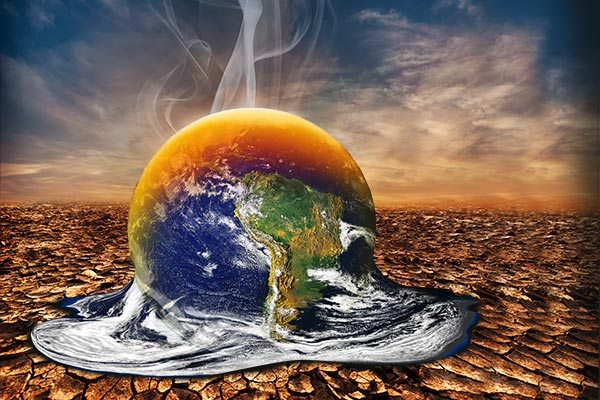The future might hold something dire for humans as a recent study has confirmed that the climate models prepared for the near future aren’t accurate and the situation could be worse than earlier predicted. As per a research, global warming could warm up our planet twice than current climate models and projections estimate. The research involved several researchers from 17 countries and it is published in the journal Nature Geoscience that paints a weird and horrifying image of Earth’s future which is currently under the influence of global warming and the situation is getting dire by days.
Following the research, scientists found out that polar caps might collapse, the sea level might rise by 20-foot engulfing most of the coastal cities while the super dry Sahara Desert will turn green and that’s just a few of the predictions made by the scientists. In December 2015, a Paris Climate Agreement was signed by almost all the countries worldwide thereby imposing laws and regulations to limit global warming to just 2° Celsius post-pre-industrial levels to which, United States’ President Donald Trump signed out in 2017.
But a recent study suggests that the 2° Celsius rise limited by the Paris Agreement may not be enough since even a 1.5° Celsius change could have a disastrous impact on the Earth and its various ecosystems that are constantly under threat due to climate change and global warming to name a few. In order to draw a conclusion on global warming and how it can affect our planet, researchers conducted an elaborate study of the last three global warming events that occurred in the past.
Researchers studied the Holocene thermal maximum that occurred between 5,000 to 9,000 years ago; the last interglacial global warming period that occurred between 129,000 and 116,000 years ago; and finally the mid-Pliocene warming period which happened between 3.3 to 3 million years ago since these three periods are well documented. After analyzing the records, scientists found out that the Earth’s climate was warmer by just 0.5° to 2° Celsius compared to the pre-industrial 19th-century temperature which is taken for reference.
Additionally, researchers analyzed atomic isotopes, ice cores, fossil records, sediment layers, and others in order to analyse the effect of these three warming periods and that is when, they stumbled upon the conclusion that climate change that occurred in the past triggered many tragic events such as rise in sea level by at least 20 feet, collapse of polar ice caps, major plankton redistribution, and others. They also found out that the Sahara Desert could become greener while forest species living at the high altitude might start to deplete and will be dominated by savanna.
Moving further, researchers also found out a phenomenon called amplifying mechanisms which are something that climate models don’t take into account and thus predict inaccurate results. But after researchers accounted for amplifying mechanisms, they found out that the climate situation could worsen than ever expected or predicted over long-term warming since these climate prediction models usually don’t account for short-term climate changes.
The question is, what does this research means for the future? Earth is warming up at a faster rate compared to the previously occurred three global warming events. The excess increase in carbon dioxide (CO2) emission that caused mid-Pliocene global warming. n The CO2 emission is increasing today and hit the highest point in 60 years this April. The worrying aspect of excess CO2 emission is that fact that even if humans could put an end to CO2 emission right now which is highly unlikely, it would take our planet centuries or even millennia to reach an equilibrium. Thus, the earlier predictions made at the Paris Agreement prompting the countries to limit 2°C rise in global temperature, it is still smaller than estimated.


